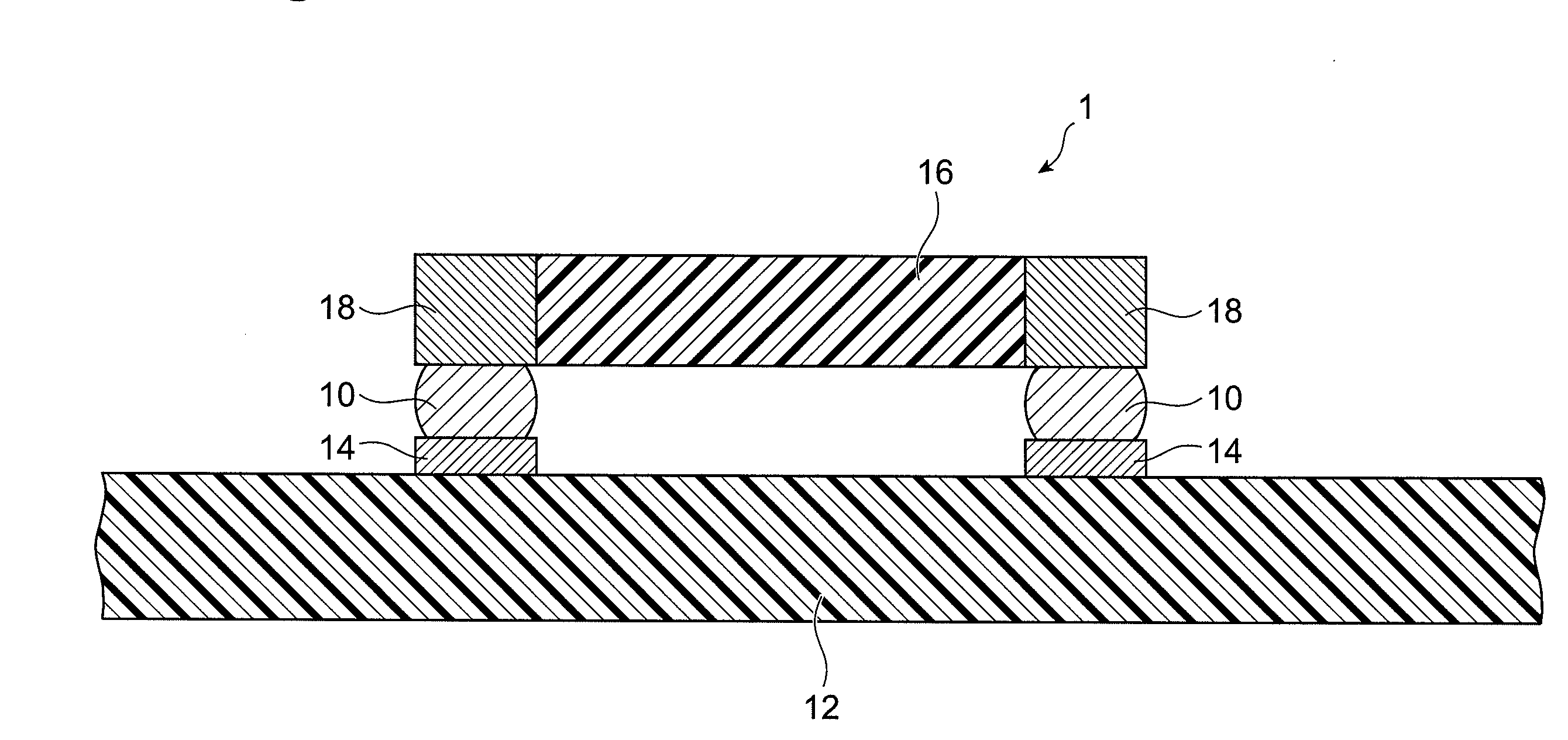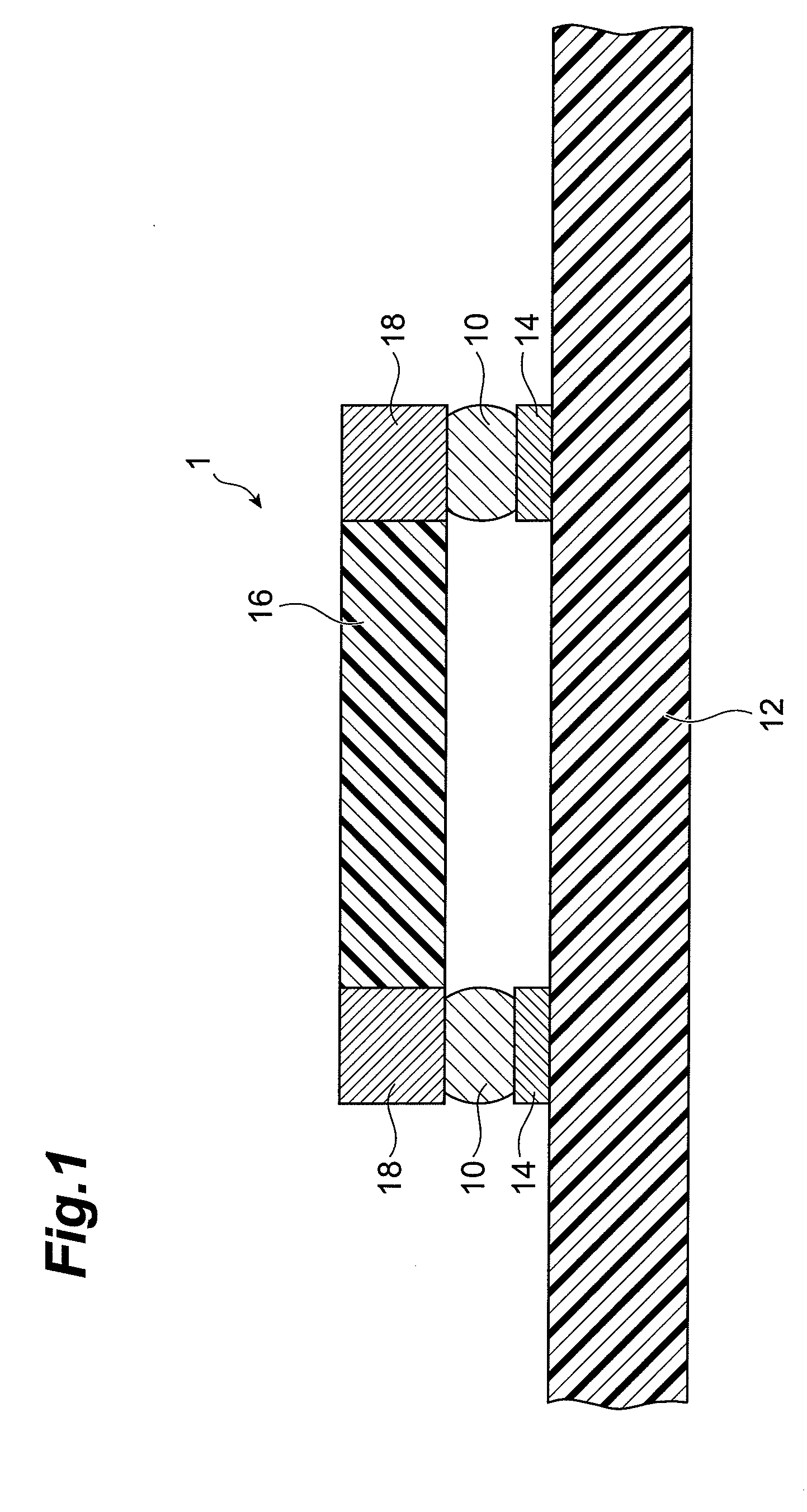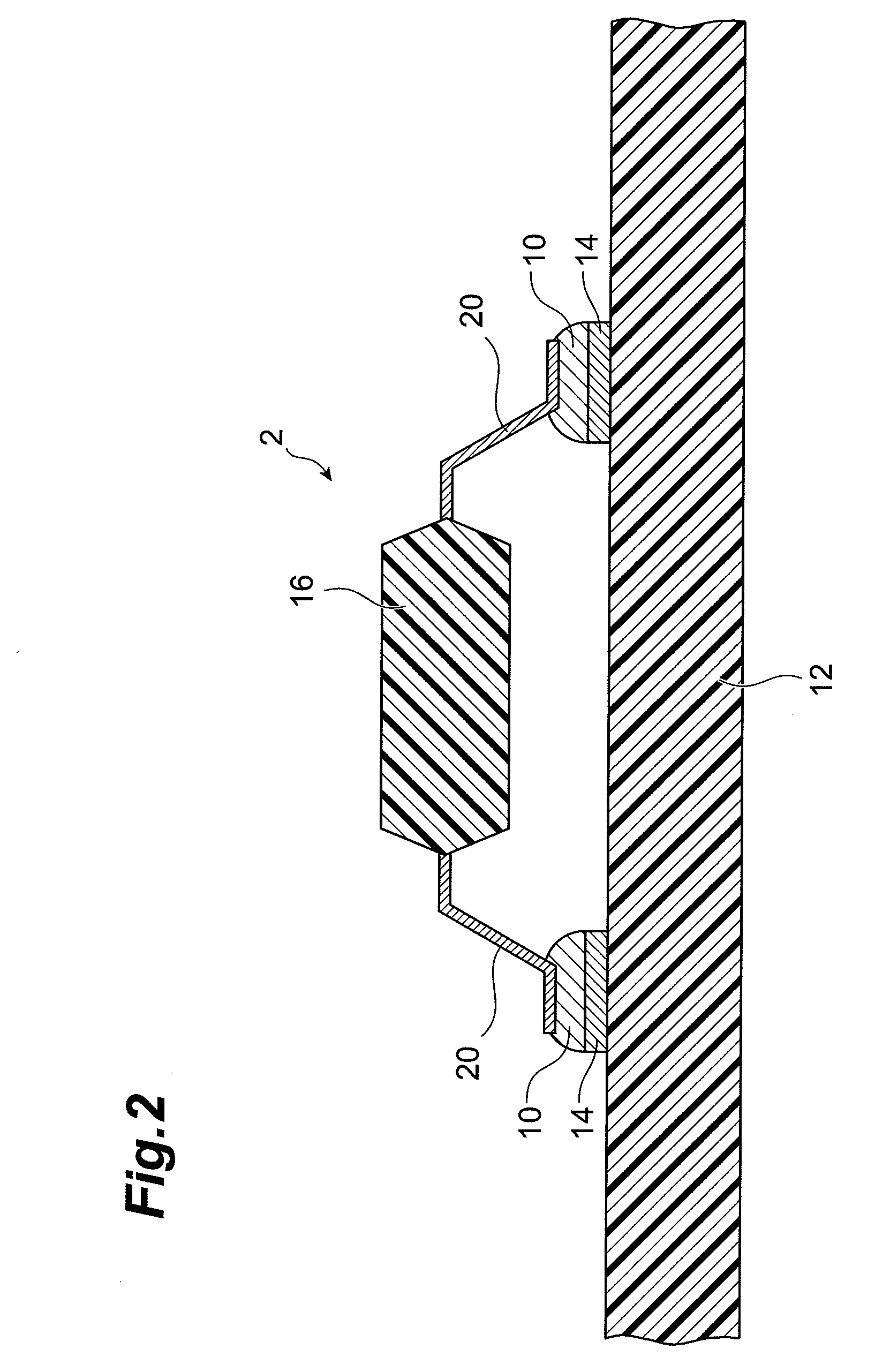Electroconductive Paste and Substrate Using the Same for Mounting Electronic Parts
a technology of electroconductive paste and substrate, which is applied in the direction of capacitors, transportation and packaging, synthetic resin layered products, etc., can solve the problems of shortening the length of the electrode or the wiring, inconvenient installation, and inability to provide satisfactory effects, etc., and achieves excellent conductivity and satisfactory conductivity.
- Summary
- Abstract
- Description
- Claims
- Application Information
AI Technical Summary
Benefits of technology
Problems solved by technology
Method used
Image
Examples
example 1
[0084]After mixing 70 parts by weight of YDF-170 (trade name for bisphenol F-type epoxy resin by Tohto Kasei Co., Ltd., epoxy equivalents=170), 20 parts by weight of PP-101 (trade name for alkylphenyl glycidyl ether by Tohto Kasei Co., Ltd., epoxy equivalents=230) and 10 parts by weight of 2P4MHZ (trade name for imidazole compound with a hydroxyl group by Shikoku Chemicals Corp.), the mixture was passed through a triple roll three times to prepare a binder component.
[0085]Next, spherical copper powder with a mean particle size of 5.1 μm prepared by an atomizing method (trade name: SFR-Cu by Nippon Atomized Metal Powders Corp.) was washed with dilute hydrochloric acid and purified water, and then the spherical copper powder was subjected to displacement plating with a plating solution containing 80 g of AgCN and 75 g of NaCN per liter of water to a silver coverage of 18 wt % (silver weight=18 wt % based on the total of the spherical copper powder and silver), and finally washed and d...
examples 2 to 16
, Comparative Examples 1 To 5 And Reference Examples 1 To 8
[0088]Conductive pastes were obtained for Examples 2 to 16, Comparative Examples 1 to 5 and Reference Examples 1 to 8 in the same manner as Example 1, except that the compositions were as listed in Tables 1 to 5, as mentioned above. The materials described in Tables 1 to 5 are explained in detail below. The units for the content of each material in Tables 1 to 5 are parts by weight (where the values in parentheses for the conductive powder A and silver powder are the volume ratios (units: vol %) of the conductive powder A or silver powder based on the total volume of the conductive powder A or silver powder and the binder component).
[0089]YL-980: Bisphenol A-type epoxy resin, product of Yuka-Shell Epoxy Co. Ltd.;
[0090]EX-212: Neopentylglycol-type epoxy resin, product of Nagase Chemicals, Ltd.;
[0091]2PHZ: Imidazole compound with a hydroxyl group 2-phenyl-4,5-hydroxymethylimidazole, product of Shikoku Chemicals Corp.;
[0092]2PZ...
PUM
| Property | Measurement | Unit |
|---|---|---|
| particle size | aaaaa | aaaaa |
| particle size | aaaaa | aaaaa |
| relative density | aaaaa | aaaaa |
Abstract
Description
Claims
Application Information
 Login to View More
Login to View More - R&D
- Intellectual Property
- Life Sciences
- Materials
- Tech Scout
- Unparalleled Data Quality
- Higher Quality Content
- 60% Fewer Hallucinations
Browse by: Latest US Patents, China's latest patents, Technical Efficacy Thesaurus, Application Domain, Technology Topic, Popular Technical Reports.
© 2025 PatSnap. All rights reserved.Legal|Privacy policy|Modern Slavery Act Transparency Statement|Sitemap|About US| Contact US: help@patsnap.com



